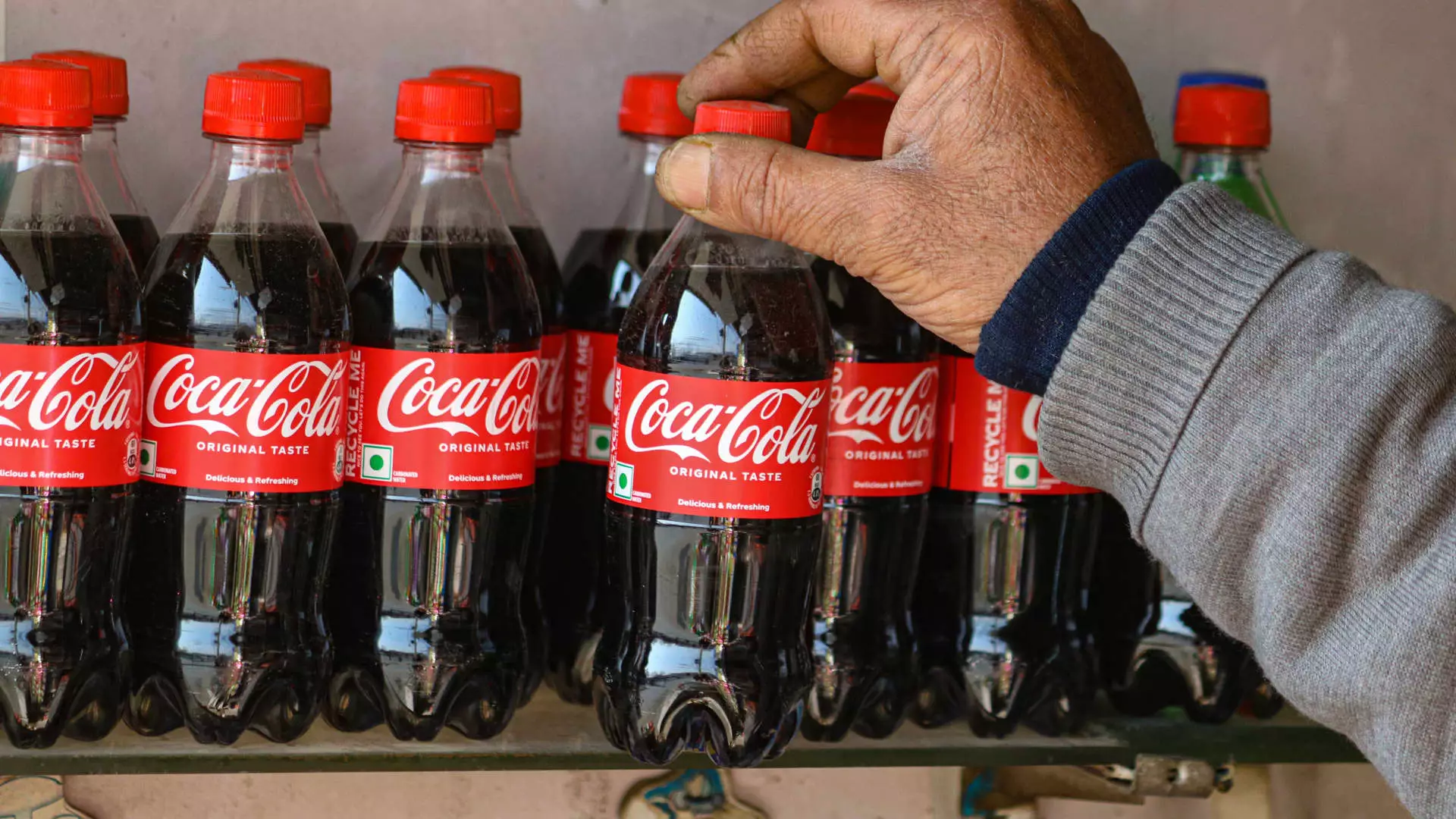Coca-Cola has faced significant challenges lately, particularly concerning its packaging strategy in light of recent tariff increases on aluminum. As companies navigate a changing economic environment, decisions made at the top can have vast implications for the entire supply chain. CEO James Quincey’s comments during a recent earnings call illustrate Coca-Cola’s approach to manage both packaging materials and stakeholder expectations amidst rising costs. This article delves into the nuances of the company’s evolving packaging strategy, exploring the balance between sustainability, consumer affordability, and the pressures exerted by governmental trade policies.
Coca-Cola, known for its iconic aluminum cans, is considering pivoting towards plastic bottles to mitigate the financial consequences following President Donald Trump’s announcement of elevated tariffs on imported aluminum and steel. Quincey noted that if the cost of aluminum rises significantly, the company would have the option to amplify its use of PET (polyethylene terephthalate) plastic. This strategic move signals not only a reaction to potential cost increases but poses fundamental questions about the company’s commitment to sustainability given the environmental implications of plastic waste compared to recyclable aluminum.
While it may appear pragmatic to transition to more cost-effective plastic options, this decision comes against a backdrop of increasing consumer scrutiny regarding plastics. Despite the cheaper upstream costs associated with PET bottles, the recycling rates for such materials lag significantly behind those of aluminum. As of 2018, only 29.1% of PET bottles were recycled, contrasted with a notably higher recycling rate of 50.4% for aluminum cans. This discrepancy raises critical environmental considerations, especially for a company that has faced criticism for its contributions to global plastic pollution.
Though Quincey attempted to downplay the financial ramifications of the 25% increase in aluminum tariffs, stating that it would not drastically alter Coca-Cola’s multibillion-dollar operations, the reality is more complex. The overall cost structure of an expansive multinational corporation like Coca-Cola isn’t easily altered; however, packaging constitutes a vital aspect of production costs. Should aluminum prices continue to rise, it may strain the perceived affordability of its products at the retail level, prompting the company to reconsider its pricing strategy.
Coca-Cola is not unique in facing increased costs due to tariffs—many industries, particularly those reliant on imported materials, are adversely affected. However, the beverage giant also retains the option to source aluminum domestically, which could ease the financial burden. Quincey highlighted this potential pivot, indicating that it is crucial for Coke to assess all available pathways while maintaining customer satisfaction and competitive pricing.
A Broader Perspective on Sustainability Efforts
Despite Coca-Cola’s intentions to use more aluminum in its packaging options in recent years, it’s essential to point out the glaring irony of its situation. The company has been criticized by environmental organizations like Greenpeace for being the world’s worst polluter for six consecutive years over its extensive production of single-use plastics. This branding is further compounded by the recent roll-back of its sustainability goals—the company now aims for 35% to 40% recycled material in its packaging by 2035, a stark decline from a previous target of 50% recycled content by 2030.
This pivot away from ambitious sustainability objectives paints a grim picture of Coca-Cola’s commitment to addressing plastic pollution, especially when such goals are willingly dialed back amidst financial pressures. The obligation to ensure the collection of a certain percentage of its packaging—ranging from 70% to 75%—feels like an inadequate response to the pressing problem of plastic waste exacerbated by a reliance on PET materials.
Coca-Cola’s current dilemma encapsulates the broader tensions faced by corporations striving to balance profitability and sustainability. As it considers transitioning from aluminum to plastic to alleviate rising costs, it must grapple with the implications of contributing to plastic pollution, all while responding to changing consumer preferences and regulatory pressures. The evolving landscape suggests that while adaptable strategies may serve immediate financial needs, they must also be aligned with long-term environmental stewardship. Failure to do so risks alienating a conscientious consumer base increasingly wary of the environmental impacts behind their favorite beverages. In the quest to optimize affordability, Coca-Cola must tread carefully—ensuring that the choices made today do not lead to greater challenges tomorrow.


Leave a Reply